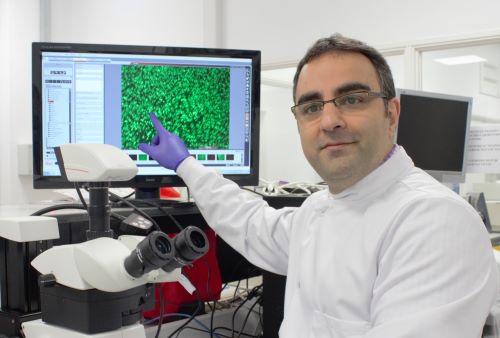Researchers eye potential cure for blindness caused by injury
 Researchers at the University of Bradford say they are close to perfecting a new technique that could revolutionise eye surgery and restore sight to people blinded due to injuries to their cornea.
Researchers at the University of Bradford say they are close to perfecting a new technique that could revolutionise eye surgery and restore sight to people blinded due to injuries to their cornea.While corneal transplants from donors have been possible for some time - and earlier this year, an Israeli team carried out the world’s first artificial corneal transplant - the new technique would effectively enable the body to ‘grow’ a new cornea.
Dr Farshid Sefat from the Faculty of Engineering & Informatics said the technique involved using a biopolymer to create a kind of ‘scaffold’ for regenerative stem cells.
New Cornea
He explained: “The cornea is the outermost part of the eye, so whenever you touch your eye, you are touching the cornea. When this is damaged, it can sometimes lead to blindness.
“It is already possible to transplant corneas from donors, and it is also possible to use artificial materials. However, when we use an artificial material, such as a polymer, most researchers around the world work with just one layer; when you try to work with more than one layer, it becomes very complicated.
“However, the human cornea is actually made up of five layers. What we have done is develop a new ‘recipe’ that will enable us to create multiple layers, using something called a biopolymer - this bio-polymer then acts as a scaffold for stem cells to create a new cornea.”
The stem cells in question reside in a special ‘niche’ inside the human eye and are normally inactive - they only become active when the eye is damaged and needs to be repaired.
Biopolymers are materials which are acceptable to the human body without any rejection.
The new system would create multiple layers, more closely mimicking the eye’s natural design - whole cornea would be around 500 microns thick (one micron is equal to one-thousandth of a millimetre).
Natural design
Dr Sefat said: “Inside the human eye we have stem cells, which are inactive. However, whenever there is damage, they become activated. They are located inside a niche in the cornea. We are looking at these stem cell niches inside the human eye and then we look at different types of micro-environments in which we can create an artificial cornea along with an artificial niches.
“Corneal blindness affects 4.9m of people worldwide, which results in the need for surgery and replacement, leading to a long treatment time of between three and five years for patients placed on waiting lists for corneal transplants.
“What we are researching at Bradford is a technique that may cure blindness caused by damage to the cornea and not blindness caused by damage to the retina or optic nerve, which is much more complex.”
Dr Sefat, who has been researching artificial corneas for the last 12 years - first in Sheffield and then New York, before moving to work in Bradford five years ago - said the new technique would ultimately lead to better outcomes for patients.
It is being developed at the University of Bradford’s Polymer IRC (Interdisciplinary Research Centre), one of the largest research centres of its kind in Europe.
Most advanced
Dr Sefat, who also conducts research into breast cancer and blood vessel repair added: “Bradford’s Polymer IRC is one of the largest and most advanced institutions of its kind in the whole of Europe and has a wealth of specialist equipment with many top researchers which are enabling us to carry out this research.
“Additionally, in terms of prospective students who might be considering studying bioengineering, this is just one of many areas of study - we also do research into breast cancer, blood vessels, brain tumours and skin.”
More information on the University's biomedical sciences courses can be found here.
In brief:
- Scientists are developing a method by which stem cells in the eye could re-grow corneas
- New technique will use multiple layers of biopolymer to mimic the cornea’s natural composition
- Cornea thickness is just around 500 microns
- Procedure could cure blindness for millions worldwide
The Polymer Interdisciplinary Research Centre was founded in 1989 as a focal point for UK polymer science & engineering, supported by the Engineering and Physical Sciences Research Council over its first 11 years. Prof Phil Coates who is director of Polymer IRC provided great support to Prof Sefat in many projects including UK-China vascular project.
It formed a critical mass network of leading polymer scientists and engineers, with research interests across advanced materials including soft matter, nanocomposites, biomaterials, with strong UK and International links. The latter have become even more significant in recent years. The Polymer IRC has a range of polymer-related research and training activities for industry and research students.





















